
https://abs.twimg.com/emoji/v2/... draggable="false" alt="1️⃣" title="Keycap digit one" aria-label="Emoji: Keycap digit one">The Terrorist States blue print :The Houthi&
#39;s, Seeds of the Khomeinist Empire in Yemen

https://abs.twimg.com/emoji/v2/... draggable="false" alt="2️⃣" title="Keycap digit two" aria-label="Emoji: Keycap digit two">Contrary to the experiences of Islamist groups in the Arab world, Iranian Islamists who came to power in 1979 in a popular revolution, which overthrew the rule of the Shah and established the "Islamic" Republic of Iran, managed to establish a different political experience.

https://abs.twimg.com/emoji/v2/... draggable="false" alt="3️⃣" title="Keycap digit three" aria-label="Emoji: Keycap digit three">Not only did it build the Islamist state and establish a model of governance that would provide its foundations from, The Shiite religious authority, and even turned into a regional power and its influence extended to a number of Arab and Asian countries .

https://abs.twimg.com/emoji/v2/... draggable="false" alt="4️⃣" title="Keycap digit four" aria-label="Emoji: Keycap digit four">Though the Islamic Republic experience in Iran has raised the concerns of the Arab leaders and their American allies , resulting in the eight-year war, it did not receive calm intellectual and rational attention, to understand the secrets of the power of this experience.

https://abs.twimg.com/emoji/v2/... draggable="false" alt="5️⃣" title="Keycap digit five" aria-label="Emoji: Keycap digit five">To understand mechanisms that enable it to Governance, and its ability to confront the war with Iraq in addition to the regional and international blockade.
The importance of reading the political experience in Iran to understand how a terrorist state can thrive and survive.

https://abs.twimg.com/emoji/v2/... draggable="false" alt="6️⃣" title="Keycap digit six" aria-label="Emoji: Keycap digit six">To understand the rise of Tehran&
#39;s political influence in the region in general, especially in Iraq, Syria, Lebanon, Afghanistan and Pakistan and Yemen , in which Tehran is able to be one of the most influential in , through sectarian politics and leftist revelationery ideology
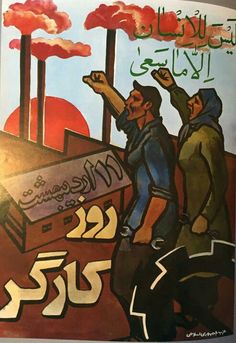 To understand the rise of Tehran& #39;s political influence in the region in general, especially in Iraq, Syria, Lebanon, Afghanistan and Pakistan and Yemen , in which Tehran is able to be one of the most influential in , through sectarian politics and leftist revelationery ideology" title="https://abs.twimg.com/emoji/v2/... draggable="false" alt="6️⃣" title="Keycap digit six" aria-label="Emoji: Keycap digit six">To understand the rise of Tehran& #39;s political influence in the region in general, especially in Iraq, Syria, Lebanon, Afghanistan and Pakistan and Yemen , in which Tehran is able to be one of the most influential in , through sectarian politics and leftist revelationery ideology">
To understand the rise of Tehran& #39;s political influence in the region in general, especially in Iraq, Syria, Lebanon, Afghanistan and Pakistan and Yemen , in which Tehran is able to be one of the most influential in , through sectarian politics and leftist revelationery ideology" title="https://abs.twimg.com/emoji/v2/... draggable="false" alt="6️⃣" title="Keycap digit six" aria-label="Emoji: Keycap digit six">To understand the rise of Tehran& #39;s political influence in the region in general, especially in Iraq, Syria, Lebanon, Afghanistan and Pakistan and Yemen , in which Tehran is able to be one of the most influential in , through sectarian politics and leftist revelationery ideology">
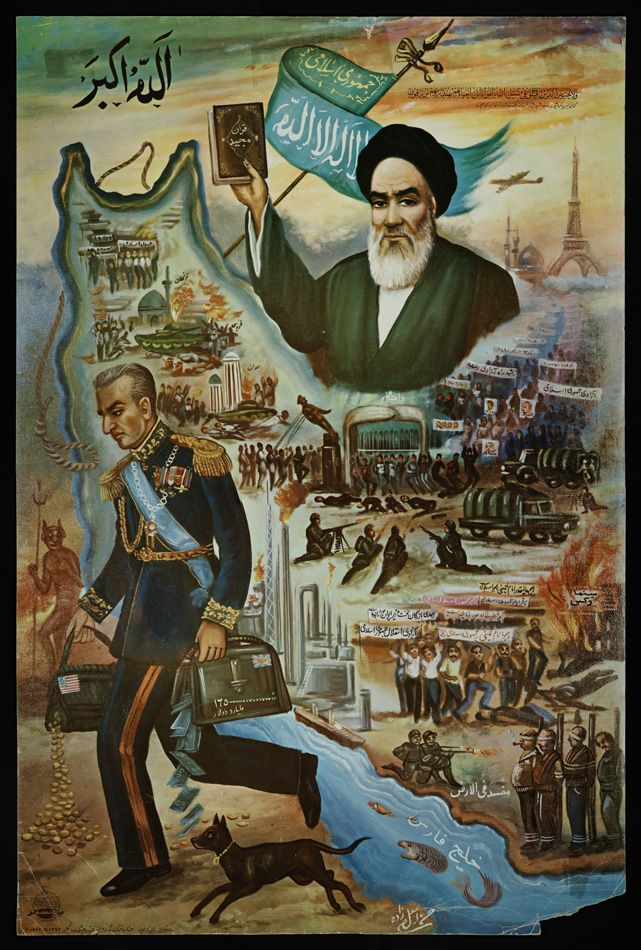 To understand the rise of Tehran& #39;s political influence in the region in general, especially in Iraq, Syria, Lebanon, Afghanistan and Pakistan and Yemen , in which Tehran is able to be one of the most influential in , through sectarian politics and leftist revelationery ideology" title="https://abs.twimg.com/emoji/v2/... draggable="false" alt="6️⃣" title="Keycap digit six" aria-label="Emoji: Keycap digit six">To understand the rise of Tehran& #39;s political influence in the region in general, especially in Iraq, Syria, Lebanon, Afghanistan and Pakistan and Yemen , in which Tehran is able to be one of the most influential in , through sectarian politics and leftist revelationery ideology">
To understand the rise of Tehran& #39;s political influence in the region in general, especially in Iraq, Syria, Lebanon, Afghanistan and Pakistan and Yemen , in which Tehran is able to be one of the most influential in , through sectarian politics and leftist revelationery ideology" title="https://abs.twimg.com/emoji/v2/... draggable="false" alt="6️⃣" title="Keycap digit six" aria-label="Emoji: Keycap digit six">To understand the rise of Tehran& #39;s political influence in the region in general, especially in Iraq, Syria, Lebanon, Afghanistan and Pakistan and Yemen , in which Tehran is able to be one of the most influential in , through sectarian politics and leftist revelationery ideology">
 To understand the rise of Tehran& #39;s political influence in the region in general, especially in Iraq, Syria, Lebanon, Afghanistan and Pakistan and Yemen , in which Tehran is able to be one of the most influential in , through sectarian politics and leftist revelationery ideology" title="https://abs.twimg.com/emoji/v2/... draggable="false" alt="6️⃣" title="Keycap digit six" aria-label="Emoji: Keycap digit six">To understand the rise of Tehran& #39;s political influence in the region in general, especially in Iraq, Syria, Lebanon, Afghanistan and Pakistan and Yemen , in which Tehran is able to be one of the most influential in , through sectarian politics and leftist revelationery ideology">
To understand the rise of Tehran& #39;s political influence in the region in general, especially in Iraq, Syria, Lebanon, Afghanistan and Pakistan and Yemen , in which Tehran is able to be one of the most influential in , through sectarian politics and leftist revelationery ideology" title="https://abs.twimg.com/emoji/v2/... draggable="false" alt="6️⃣" title="Keycap digit six" aria-label="Emoji: Keycap digit six">To understand the rise of Tehran& #39;s political influence in the region in general, especially in Iraq, Syria, Lebanon, Afghanistan and Pakistan and Yemen , in which Tehran is able to be one of the most influential in , through sectarian politics and leftist revelationery ideology">
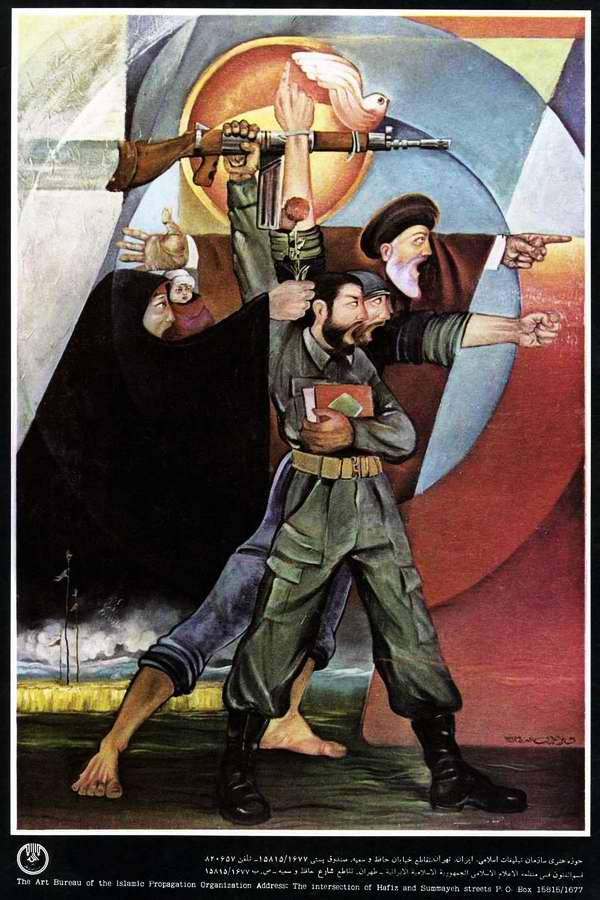 To understand the rise of Tehran& #39;s political influence in the region in general, especially in Iraq, Syria, Lebanon, Afghanistan and Pakistan and Yemen , in which Tehran is able to be one of the most influential in , through sectarian politics and leftist revelationery ideology" title="https://abs.twimg.com/emoji/v2/... draggable="false" alt="6️⃣" title="Keycap digit six" aria-label="Emoji: Keycap digit six">To understand the rise of Tehran& #39;s political influence in the region in general, especially in Iraq, Syria, Lebanon, Afghanistan and Pakistan and Yemen , in which Tehran is able to be one of the most influential in , through sectarian politics and leftist revelationery ideology">
To understand the rise of Tehran& #39;s political influence in the region in general, especially in Iraq, Syria, Lebanon, Afghanistan and Pakistan and Yemen , in which Tehran is able to be one of the most influential in , through sectarian politics and leftist revelationery ideology" title="https://abs.twimg.com/emoji/v2/... draggable="false" alt="6️⃣" title="Keycap digit six" aria-label="Emoji: Keycap digit six">To understand the rise of Tehran& #39;s political influence in the region in general, especially in Iraq, Syria, Lebanon, Afghanistan and Pakistan and Yemen , in which Tehran is able to be one of the most influential in , through sectarian politics and leftist revelationery ideology">

https://abs.twimg.com/emoji/v2/... draggable="false" alt="7️⃣" title="Keycap digit seven" aria-label="Emoji: Keycap digit seven">Today I will focus on the history of the Iranian experience, not only from its religious, political or defense perspectives, but also from its intellectual point of view of the Houthis with a view to understanding it first.

https://abs.twimg.com/emoji/v2/... draggable="false" alt="8️⃣" title="Keycap digit eight" aria-label="Emoji: Keycap digit eight">Then knowing the secrets of its success and expansion in the region, and finally its transformation into a regional and international power that provided other Islamist groups with the blueprint that gave birth to, Hezbulla, Hamas, ISIS, Houthi state and Libyan MB proxy state.

https://abs.twimg.com/emoji/v2/... draggable="false" alt="9️⃣" title="Keycap digit nine" aria-label="Emoji: Keycap digit nine">On September 26, 1962, a revolution erupted in northern Yemen that overthrew the Imami Hadawi rule, which was based on a religious sectarian authority, based on the "restriction of the Imamate in the two parts of Yeman North and South "

https://abs.twimg.com/emoji/v2/... draggable="false" alt="1️⃣" title="Keycap digit one" aria-label="Emoji: Keycap digit one">

https://abs.twimg.com/emoji/v2/... draggable="false" alt="0️⃣" title="Keycap digit zero" aria-label="Emoji: Keycap digit zero">as a condition of sixteen conditions, set by the Hadawite movement, which established the rule of the Rassien Hadayans In the north of the country, which lasted intermittently for nearly a thousand years, Imam Yahya bin Al-Hussein, who was dubbed "the guide to the right"

https://abs.twimg.com/emoji/v2/... draggable="false" alt="1️⃣" title="Keycap digit one" aria-label="Emoji: Keycap digit one">

https://abs.twimg.com/emoji/v2/... draggable="false" alt="1️⃣" title="Keycap digit one" aria-label="Emoji: Keycap digit one">introduced a religious condition for everyone who leads the religious and political Imamate, claiming to be a descendant of the bloodline of the Prophet&
#39;s grandsons Al-Hassan or Al-Hussein, which Hadawiya expressed as "limiting the Imamate to the two saints."

https://abs.twimg.com/emoji/v2/... draggable="false" alt="1️⃣" title="Keycap digit one" aria-label="Emoji: Keycap digit one">

https://abs.twimg.com/emoji/v2/... draggable="false" alt="2️⃣" title="Keycap digit two" aria-label="Emoji: Keycap digit two">Although Imam Zaid - whom Al-Hadi confirms that he belonged to him - did not say that condition, but after he succeeded in resolving some tribal differences between the Hamadan bin Zaid and Khulan bin Aamir tribes in the north of the country

https://abs.twimg.com/emoji/v2/... draggable="false" alt="1️⃣" title="Keycap digit one" aria-label="Emoji: Keycap digit one">

https://abs.twimg.com/emoji/v2/... draggable="false" alt="3️⃣" title="Keycap digit three" aria-label="Emoji: Keycap digit three">Al-Hadi transformed from “Hakam”, or a mediator between Two tribes to a regional "ruler", and then to an "imam", established grounds for limiting power to his descendants after him, by introducing this condition, which he had invented, and attributed to Zaidi.

https://abs.twimg.com/emoji/v2/... draggable="false" alt="1️⃣" title="Keycap digit one" aria-label="Emoji: Keycap digit one">

https://abs.twimg.com/emoji/v2/... draggable="false" alt="4️⃣" title="Keycap digit four" aria-label="Emoji: Keycap digit four">"Political Hashemite" and attempts to return to power
Since the fall of the Imamate’s rule based on the theory of “divine right” in power, at the hands of the September revolutionaries in the year 1962,

https://abs.twimg.com/emoji/v2/... draggable="false" alt="1️⃣" title="Keycap digit one" aria-label="Emoji: Keycap digit one">

https://abs.twimg.com/emoji/v2/... draggable="false" alt="5️⃣" title="Keycap digit five" aria-label="Emoji: Keycap digit five">the “political Hashemite” movement in Yemen has not despaired from returning to power again.
But for decades, their leaders were searching for a suitable formula to return, after the peoples moved on abandoning the idea of "limiting the Imamate" and "divine right",

https://abs.twimg.com/emoji/v2/... draggable="false" alt="1️⃣" title="Keycap digit one" aria-label="Emoji: Keycap digit one">

https://abs.twimg.com/emoji/v2/... draggable="false" alt="6️⃣" title="Keycap digit six" aria-label="Emoji: Keycap digit six"> it was no longer palatable for this movement to demand anything from Yemeni people , because it was known to the Yemenis as intolerant and racist movement , after Decades of revolution against the imams system.

https://abs.twimg.com/emoji/v2/... draggable="false" alt="1️⃣" title="Keycap digit one" aria-label="Emoji: Keycap digit one">

https://abs.twimg.com/emoji/v2/... draggable="false" alt="7️⃣" title="Keycap digit seven" aria-label="Emoji: Keycap digit seven">The Hashemite political stream found new life in the exploitation of "Palestinian Israeli conflict ", taking a page out of the Khomeinist revolutions tactics in Iran its misleading shouting "theory of divine truth", is the only way to free Palestine.

https://abs.twimg.com/emoji/v2/... draggable="false" alt="1️⃣" title="Keycap digit one" aria-label="Emoji: Keycap digit one">

https://abs.twimg.com/emoji/v2/... draggable="false" alt="8️⃣" title="Keycap digit eight" aria-label="Emoji: Keycap digit eight">The year is 1985 The followers of the Imamate start making serious attempts to bring back the Imamate in the religious and political social circles , Judge Salah Ahmed Fleetah, the father of Muhammad (Abdel Salam) Fleetah, spokesman for the Houthi&
#39;s

https://abs.twimg.com/emoji/v2/... draggable="false" alt="1️⃣" title="Keycap digit one" aria-label="Emoji: Keycap digit one">

https://abs.twimg.com/emoji/v2/... draggable="false" alt="9️⃣" title="Keycap digit nine" aria-label="Emoji: Keycap digit nine">founded what was called "the Union of the Believing Youth", which was a religious forum concerned with the revival of Al-Hadawiya, and among its jurists was: Majd Al-Din Al-Moaydi, and Badr Al-Din Al-Houthi, the father of the current Houthi leader Abdul-Malik Al-Houthi.

https://abs.twimg.com/emoji/v2/... draggable="false" alt="2️⃣" title="Keycap digit two" aria-label="Emoji: Keycap digit two">

https://abs.twimg.com/emoji/v2/... draggable="false" alt="0️⃣" title="Keycap digit zero" aria-label="Emoji: Keycap digit zero">During that period, the Yemeni constitution prohibited the formation of any political, religious, or political groups, so the "union" supervised by Judge falitah disbanded after its members were linked to Iranian regime .

https://abs.twimg.com/emoji/v2/... draggable="false" alt="2️⃣" title="Keycap digit two" aria-label="Emoji: Keycap digit two">

https://abs.twimg.com/emoji/v2/... draggable="false" alt="1️⃣" title="Keycap digit one" aria-label="Emoji: Keycap digit one">The situation continued as it was until after the realization of the Yemeni unity in 1990, where an atmosphere of political and intellectual freedoms prevailed to some extent, so a "believing youth forum" was established, with religious activities in the traditional Zaidi way

https://abs.twimg.com/emoji/v2/... draggable="false" alt="2️⃣" title="Keycap digit two" aria-label="Emoji: Keycap digit two">

https://abs.twimg.com/emoji/v2/... draggable="false" alt="2️⃣" title="Keycap digit two" aria-label="Emoji: Keycap digit two">Abdul Karim Jadban, Ali Ahmed Al-Razhi, and Saleh Habra. Mohammed Badr Al-Din Al-Houthi, brother of Hussain Al-Houthi (former leader of the Houthis) and Abdul-Malik Al-Houthi (current leader), participated in the return of the Imamate project .

https://abs.twimg.com/emoji/v2/... draggable="false" alt="2️⃣" title="Keycap digit two" aria-label="Emoji: Keycap digit two">

https://abs.twimg.com/emoji/v2/... draggable="false" alt="3️⃣" title="Keycap digit three" aria-label="Emoji: Keycap digit three">In 1997, the founders of the Believing Youth Forum entered into a dispute with the scholar Al-Hadi, Majd al-Din al-Muaydi (a fanatical under the condition of restricting the Imamate), and other representatives of the traditional Zaidi school represented by al-Muadi,

https://abs.twimg.com/emoji/v2/... draggable="false" alt="2️⃣" title="Keycap digit two" aria-label="Emoji: Keycap digit two">

https://abs.twimg.com/emoji/v2/... draggable="false" alt="4️⃣" title="Keycap digit four" aria-label="Emoji: Keycap digit four">due to the lack of acceptance by Azzan and his companions on the condition of “limiting the imamate to the two sons”, which guarantees The Hashemite dynasty in Yemen has power over other Yemenis.

https://abs.twimg.com/emoji/v2/... draggable="false" alt="2️⃣" title="Keycap digit two" aria-label="Emoji: Keycap digit two">

https://abs.twimg.com/emoji/v2/... draggable="false" alt="5️⃣" title="Keycap digit five" aria-label="Emoji: Keycap digit five">Hussein al-Houthi greatly influenced by the Khomeini revolution in Iran, and after his visits with his father, he was convinced of the necessity of following the Iranian module in Yemen,
in 2001 he adopted his well-known slogan

https://abs.twimg.com/emoji/v2/... draggable="false" alt="2️⃣" title="Keycap digit two" aria-label="Emoji: Keycap digit two">

https://abs.twimg.com/emoji/v2/... draggable="false" alt="6️⃣" title="Keycap digit six" aria-label="Emoji: Keycap digit six">Hussein began to form departing alliances within the forum, His brother Muhammad defected with the support of his father and brothers and many of the youth of the center as they geared up to separate from the forum

https://abs.twimg.com/emoji/v2/... draggable="false" alt="2️⃣" title="Keycap digit two" aria-label="Emoji: Keycap digit two">

https://abs.twimg.com/emoji/v2/... draggable="false" alt="7️⃣" title="Keycap digit seven" aria-label="Emoji: Keycap digit seven"> People started flocking towards the Houthis who criticized the government and its policies in the regions and those who suffered from marginalization and impoverishment started folding under the Houthi banner and adapted their slogans and beliefs between 2001-2007

https://abs.twimg.com/emoji/v2/... draggable="false" alt="2️⃣" title="Keycap digit two" aria-label="Emoji: Keycap digit two">

https://abs.twimg.com/emoji/v2/... draggable="false" alt="8️⃣" title="Keycap digit eight" aria-label="Emoji: Keycap digit eight">Violence confrontation erupted between the Yemeni army and Houthi supporters, after members of the Houthi group attacked a military post killing Yemeni soldiers , and the first of what became known as the "Six Wars" broke out on June 19, 2004

https://abs.twimg.com/emoji/v2/... draggable="false" alt="2️⃣" title="Keycap digit two" aria-label="Emoji: Keycap digit two">

https://abs.twimg.com/emoji/v2/... draggable="false" alt="9️⃣" title="Keycap digit nine" aria-label="Emoji: Keycap digit nine"> Hussein al-Houthi was killed on September 8, 2004, his father took over the leadership of the part, and the second conflict that started on March 19, 2005, erupted and lasted for only weeks, before an agreement was signed between the army and the Houthi at the time.

https://abs.twimg.com/emoji/v2/... draggable="false" alt="3️⃣" title="Keycap digit three" aria-label="Emoji: Keycap digit three">

https://abs.twimg.com/emoji/v2/... draggable="false" alt="0️⃣" title="Keycap digit zero" aria-label="Emoji: Keycap digit zero">Four more rounds were led by the leader&
#39;s younger brother Abdul-Malik, ended in January 2010 as a defeat Houthi group, which signed the six conditions to stop the war after the Saudi intervention in favor of the government forces at the time.

https://abs.twimg.com/emoji/v2/... draggable="false" alt="3️⃣" title="Keycap digit three" aria-label="Emoji: Keycap digit three">

https://abs.twimg.com/emoji/v2/... draggable="false" alt="1️⃣" title="Keycap digit one" aria-label="Emoji: Keycap digit one">However, the Houthis had a golden opportunity once again with the outbreak of the "Arab Spring" events in Yemen in February 2011, when the Houthis began calling themselves the current name "Ansar Allah", running on the Iranian style in the nomenclature

https://abs.twimg.com/emoji/v2/... draggable="false" alt="3️⃣" title="Keycap digit three" aria-label="Emoji: Keycap digit three">

https://abs.twimg.com/emoji/v2/... draggable="false" alt="2️⃣" title="Keycap digit two" aria-label="Emoji: Keycap digit two">In February 2011 the Houthis entered Sana&
#39;a ending the Government presence in the capital, launching an aggressive campaign to accumulate influence and eliminate their foes and the rest is history, need I say more?
Tip: mention @twtextapp on a Twitter thread with the keyword “unroll” to get a link to it.

 Read on Twitter
Read on Twitter The Terrorist States blue print :The Houthi& #39;s, Seeds of the Khomeinist Empire in Yemen" title="https://abs.twimg.com/emoji/v2/... draggable="false" alt="1️⃣" title="Keycap digit one" aria-label="Emoji: Keycap digit one">The Terrorist States blue print :The Houthi& #39;s, Seeds of the Khomeinist Empire in Yemen">
The Terrorist States blue print :The Houthi& #39;s, Seeds of the Khomeinist Empire in Yemen" title="https://abs.twimg.com/emoji/v2/... draggable="false" alt="1️⃣" title="Keycap digit one" aria-label="Emoji: Keycap digit one">The Terrorist States blue print :The Houthi& #39;s, Seeds of the Khomeinist Empire in Yemen">
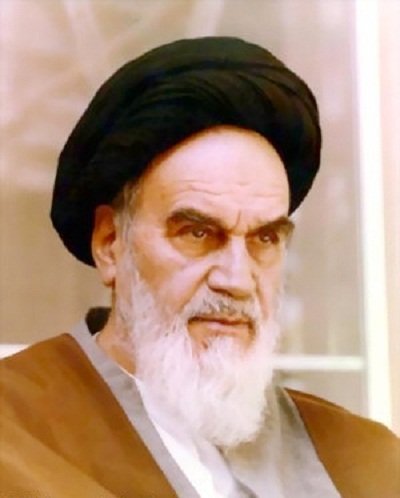 The Terrorist States blue print :The Houthi& #39;s, Seeds of the Khomeinist Empire in Yemen" title="https://abs.twimg.com/emoji/v2/... draggable="false" alt="1️⃣" title="Keycap digit one" aria-label="Emoji: Keycap digit one">The Terrorist States blue print :The Houthi& #39;s, Seeds of the Khomeinist Empire in Yemen">
The Terrorist States blue print :The Houthi& #39;s, Seeds of the Khomeinist Empire in Yemen" title="https://abs.twimg.com/emoji/v2/... draggable="false" alt="1️⃣" title="Keycap digit one" aria-label="Emoji: Keycap digit one">The Terrorist States blue print :The Houthi& #39;s, Seeds of the Khomeinist Empire in Yemen">
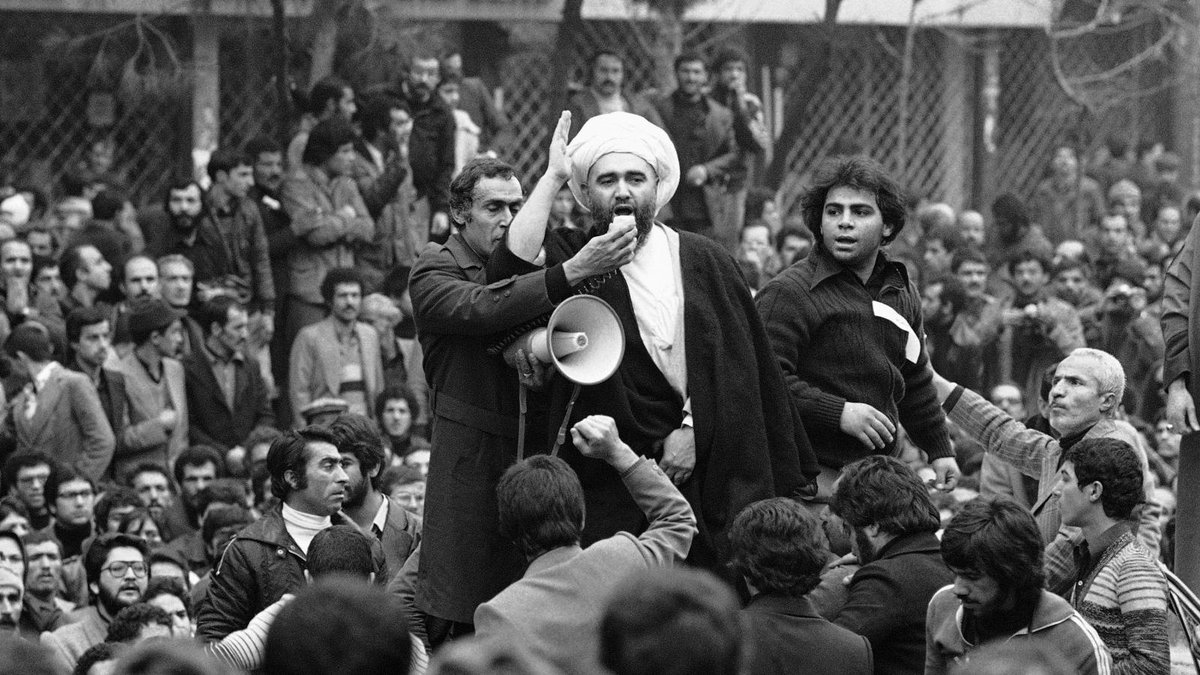 Contrary to the experiences of Islamist groups in the Arab world, Iranian Islamists who came to power in 1979 in a popular revolution, which overthrew the rule of the Shah and established the "Islamic" Republic of Iran, managed to establish a different political experience." title="https://abs.twimg.com/emoji/v2/... draggable="false" alt="2️⃣" title="Keycap digit two" aria-label="Emoji: Keycap digit two">Contrary to the experiences of Islamist groups in the Arab world, Iranian Islamists who came to power in 1979 in a popular revolution, which overthrew the rule of the Shah and established the "Islamic" Republic of Iran, managed to establish a different political experience.">
Contrary to the experiences of Islamist groups in the Arab world, Iranian Islamists who came to power in 1979 in a popular revolution, which overthrew the rule of the Shah and established the "Islamic" Republic of Iran, managed to establish a different political experience." title="https://abs.twimg.com/emoji/v2/... draggable="false" alt="2️⃣" title="Keycap digit two" aria-label="Emoji: Keycap digit two">Contrary to the experiences of Islamist groups in the Arab world, Iranian Islamists who came to power in 1979 in a popular revolution, which overthrew the rule of the Shah and established the "Islamic" Republic of Iran, managed to establish a different political experience.">
 Contrary to the experiences of Islamist groups in the Arab world, Iranian Islamists who came to power in 1979 in a popular revolution, which overthrew the rule of the Shah and established the "Islamic" Republic of Iran, managed to establish a different political experience." title="https://abs.twimg.com/emoji/v2/... draggable="false" alt="2️⃣" title="Keycap digit two" aria-label="Emoji: Keycap digit two">Contrary to the experiences of Islamist groups in the Arab world, Iranian Islamists who came to power in 1979 in a popular revolution, which overthrew the rule of the Shah and established the "Islamic" Republic of Iran, managed to establish a different political experience.">
Contrary to the experiences of Islamist groups in the Arab world, Iranian Islamists who came to power in 1979 in a popular revolution, which overthrew the rule of the Shah and established the "Islamic" Republic of Iran, managed to establish a different political experience." title="https://abs.twimg.com/emoji/v2/... draggable="false" alt="2️⃣" title="Keycap digit two" aria-label="Emoji: Keycap digit two">Contrary to the experiences of Islamist groups in the Arab world, Iranian Islamists who came to power in 1979 in a popular revolution, which overthrew the rule of the Shah and established the "Islamic" Republic of Iran, managed to establish a different political experience.">
 Contrary to the experiences of Islamist groups in the Arab world, Iranian Islamists who came to power in 1979 in a popular revolution, which overthrew the rule of the Shah and established the "Islamic" Republic of Iran, managed to establish a different political experience." title="https://abs.twimg.com/emoji/v2/... draggable="false" alt="2️⃣" title="Keycap digit two" aria-label="Emoji: Keycap digit two">Contrary to the experiences of Islamist groups in the Arab world, Iranian Islamists who came to power in 1979 in a popular revolution, which overthrew the rule of the Shah and established the "Islamic" Republic of Iran, managed to establish a different political experience.">
Contrary to the experiences of Islamist groups in the Arab world, Iranian Islamists who came to power in 1979 in a popular revolution, which overthrew the rule of the Shah and established the "Islamic" Republic of Iran, managed to establish a different political experience." title="https://abs.twimg.com/emoji/v2/... draggable="false" alt="2️⃣" title="Keycap digit two" aria-label="Emoji: Keycap digit two">Contrary to the experiences of Islamist groups in the Arab world, Iranian Islamists who came to power in 1979 in a popular revolution, which overthrew the rule of the Shah and established the "Islamic" Republic of Iran, managed to establish a different political experience.">
 Contrary to the experiences of Islamist groups in the Arab world, Iranian Islamists who came to power in 1979 in a popular revolution, which overthrew the rule of the Shah and established the "Islamic" Republic of Iran, managed to establish a different political experience." title="https://abs.twimg.com/emoji/v2/... draggable="false" alt="2️⃣" title="Keycap digit two" aria-label="Emoji: Keycap digit two">Contrary to the experiences of Islamist groups in the Arab world, Iranian Islamists who came to power in 1979 in a popular revolution, which overthrew the rule of the Shah and established the "Islamic" Republic of Iran, managed to establish a different political experience.">
Contrary to the experiences of Islamist groups in the Arab world, Iranian Islamists who came to power in 1979 in a popular revolution, which overthrew the rule of the Shah and established the "Islamic" Republic of Iran, managed to establish a different political experience." title="https://abs.twimg.com/emoji/v2/... draggable="false" alt="2️⃣" title="Keycap digit two" aria-label="Emoji: Keycap digit two">Contrary to the experiences of Islamist groups in the Arab world, Iranian Islamists who came to power in 1979 in a popular revolution, which overthrew the rule of the Shah and established the "Islamic" Republic of Iran, managed to establish a different political experience.">
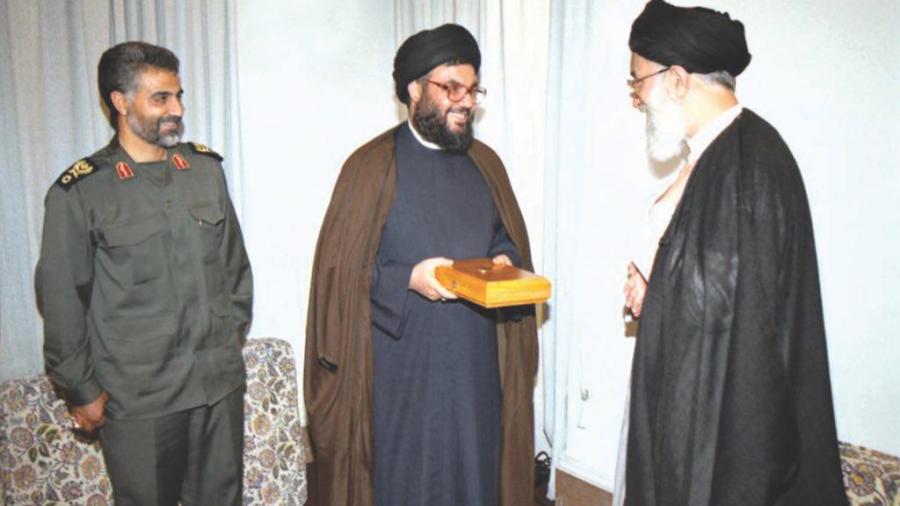 Not only did it build the Islamist state and establish a model of governance that would provide its foundations from, The Shiite religious authority, and even turned into a regional power and its influence extended to a number of Arab and Asian countries ." title="https://abs.twimg.com/emoji/v2/... draggable="false" alt="3️⃣" title="Keycap digit three" aria-label="Emoji: Keycap digit three">Not only did it build the Islamist state and establish a model of governance that would provide its foundations from, The Shiite religious authority, and even turned into a regional power and its influence extended to a number of Arab and Asian countries .">
Not only did it build the Islamist state and establish a model of governance that would provide its foundations from, The Shiite religious authority, and even turned into a regional power and its influence extended to a number of Arab and Asian countries ." title="https://abs.twimg.com/emoji/v2/... draggable="false" alt="3️⃣" title="Keycap digit three" aria-label="Emoji: Keycap digit three">Not only did it build the Islamist state and establish a model of governance that would provide its foundations from, The Shiite religious authority, and even turned into a regional power and its influence extended to a number of Arab and Asian countries .">
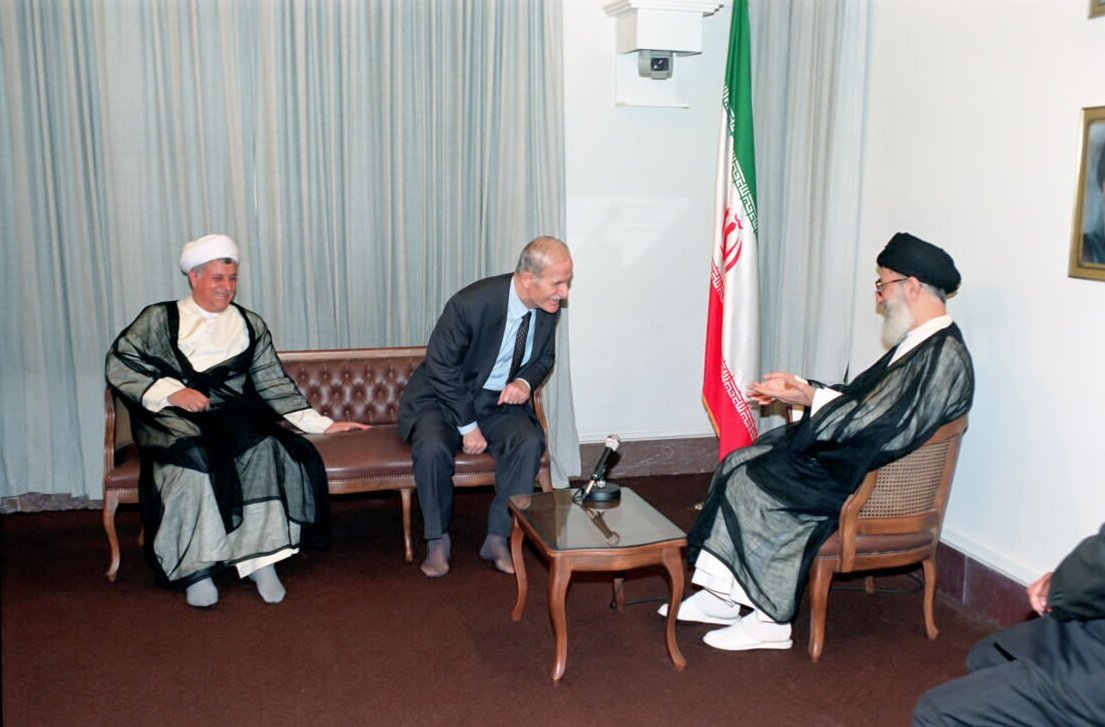 Not only did it build the Islamist state and establish a model of governance that would provide its foundations from, The Shiite religious authority, and even turned into a regional power and its influence extended to a number of Arab and Asian countries ." title="https://abs.twimg.com/emoji/v2/... draggable="false" alt="3️⃣" title="Keycap digit three" aria-label="Emoji: Keycap digit three">Not only did it build the Islamist state and establish a model of governance that would provide its foundations from, The Shiite religious authority, and even turned into a regional power and its influence extended to a number of Arab and Asian countries .">
Not only did it build the Islamist state and establish a model of governance that would provide its foundations from, The Shiite religious authority, and even turned into a regional power and its influence extended to a number of Arab and Asian countries ." title="https://abs.twimg.com/emoji/v2/... draggable="false" alt="3️⃣" title="Keycap digit three" aria-label="Emoji: Keycap digit three">Not only did it build the Islamist state and establish a model of governance that would provide its foundations from, The Shiite religious authority, and even turned into a regional power and its influence extended to a number of Arab and Asian countries .">
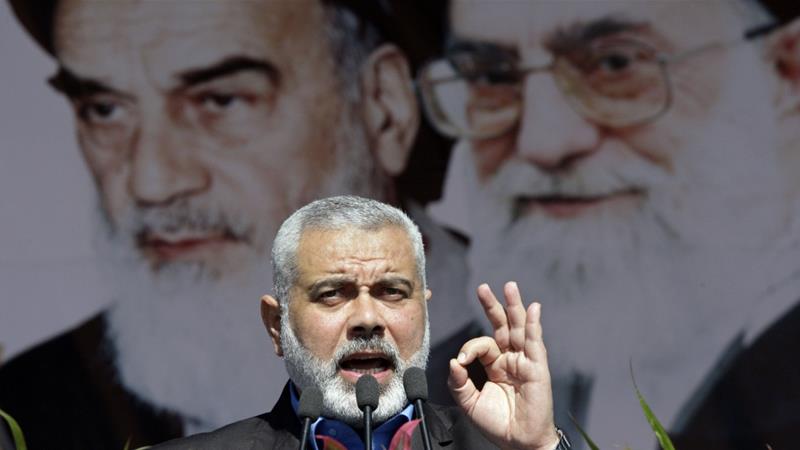 Not only did it build the Islamist state and establish a model of governance that would provide its foundations from, The Shiite religious authority, and even turned into a regional power and its influence extended to a number of Arab and Asian countries ." title="https://abs.twimg.com/emoji/v2/... draggable="false" alt="3️⃣" title="Keycap digit three" aria-label="Emoji: Keycap digit three">Not only did it build the Islamist state and establish a model of governance that would provide its foundations from, The Shiite religious authority, and even turned into a regional power and its influence extended to a number of Arab and Asian countries .">
Not only did it build the Islamist state and establish a model of governance that would provide its foundations from, The Shiite religious authority, and even turned into a regional power and its influence extended to a number of Arab and Asian countries ." title="https://abs.twimg.com/emoji/v2/... draggable="false" alt="3️⃣" title="Keycap digit three" aria-label="Emoji: Keycap digit three">Not only did it build the Islamist state and establish a model of governance that would provide its foundations from, The Shiite religious authority, and even turned into a regional power and its influence extended to a number of Arab and Asian countries .">
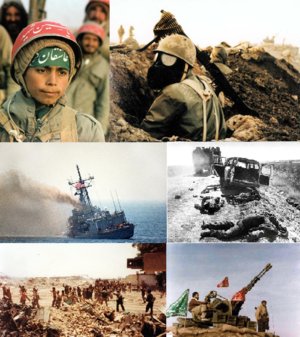 Though the Islamic Republic experience in Iran has raised the concerns of the Arab leaders and their American allies , resulting in the eight-year war, it did not receive calm intellectual and rational attention, to understand the secrets of the power of this experience." title="https://abs.twimg.com/emoji/v2/... draggable="false" alt="4️⃣" title="Keycap digit four" aria-label="Emoji: Keycap digit four">Though the Islamic Republic experience in Iran has raised the concerns of the Arab leaders and their American allies , resulting in the eight-year war, it did not receive calm intellectual and rational attention, to understand the secrets of the power of this experience." class="img-responsive" style="max-width:100%;"/>
Though the Islamic Republic experience in Iran has raised the concerns of the Arab leaders and their American allies , resulting in the eight-year war, it did not receive calm intellectual and rational attention, to understand the secrets of the power of this experience." title="https://abs.twimg.com/emoji/v2/... draggable="false" alt="4️⃣" title="Keycap digit four" aria-label="Emoji: Keycap digit four">Though the Islamic Republic experience in Iran has raised the concerns of the Arab leaders and their American allies , resulting in the eight-year war, it did not receive calm intellectual and rational attention, to understand the secrets of the power of this experience." class="img-responsive" style="max-width:100%;"/>
 To understand the rise of Tehran& #39;s political influence in the region in general, especially in Iraq, Syria, Lebanon, Afghanistan and Pakistan and Yemen , in which Tehran is able to be one of the most influential in , through sectarian politics and leftist revelationery ideology" title="https://abs.twimg.com/emoji/v2/... draggable="false" alt="6️⃣" title="Keycap digit six" aria-label="Emoji: Keycap digit six">To understand the rise of Tehran& #39;s political influence in the region in general, especially in Iraq, Syria, Lebanon, Afghanistan and Pakistan and Yemen , in which Tehran is able to be one of the most influential in , through sectarian politics and leftist revelationery ideology">
To understand the rise of Tehran& #39;s political influence in the region in general, especially in Iraq, Syria, Lebanon, Afghanistan and Pakistan and Yemen , in which Tehran is able to be one of the most influential in , through sectarian politics and leftist revelationery ideology" title="https://abs.twimg.com/emoji/v2/... draggable="false" alt="6️⃣" title="Keycap digit six" aria-label="Emoji: Keycap digit six">To understand the rise of Tehran& #39;s political influence in the region in general, especially in Iraq, Syria, Lebanon, Afghanistan and Pakistan and Yemen , in which Tehran is able to be one of the most influential in , through sectarian politics and leftist revelationery ideology">
 To understand the rise of Tehran& #39;s political influence in the region in general, especially in Iraq, Syria, Lebanon, Afghanistan and Pakistan and Yemen , in which Tehran is able to be one of the most influential in , through sectarian politics and leftist revelationery ideology" title="https://abs.twimg.com/emoji/v2/... draggable="false" alt="6️⃣" title="Keycap digit six" aria-label="Emoji: Keycap digit six">To understand the rise of Tehran& #39;s political influence in the region in general, especially in Iraq, Syria, Lebanon, Afghanistan and Pakistan and Yemen , in which Tehran is able to be one of the most influential in , through sectarian politics and leftist revelationery ideology">
To understand the rise of Tehran& #39;s political influence in the region in general, especially in Iraq, Syria, Lebanon, Afghanistan and Pakistan and Yemen , in which Tehran is able to be one of the most influential in , through sectarian politics and leftist revelationery ideology" title="https://abs.twimg.com/emoji/v2/... draggable="false" alt="6️⃣" title="Keycap digit six" aria-label="Emoji: Keycap digit six">To understand the rise of Tehran& #39;s political influence in the region in general, especially in Iraq, Syria, Lebanon, Afghanistan and Pakistan and Yemen , in which Tehran is able to be one of the most influential in , through sectarian politics and leftist revelationery ideology">
 To understand the rise of Tehran& #39;s political influence in the region in general, especially in Iraq, Syria, Lebanon, Afghanistan and Pakistan and Yemen , in which Tehran is able to be one of the most influential in , through sectarian politics and leftist revelationery ideology" title="https://abs.twimg.com/emoji/v2/... draggable="false" alt="6️⃣" title="Keycap digit six" aria-label="Emoji: Keycap digit six">To understand the rise of Tehran& #39;s political influence in the region in general, especially in Iraq, Syria, Lebanon, Afghanistan and Pakistan and Yemen , in which Tehran is able to be one of the most influential in , through sectarian politics and leftist revelationery ideology">
To understand the rise of Tehran& #39;s political influence in the region in general, especially in Iraq, Syria, Lebanon, Afghanistan and Pakistan and Yemen , in which Tehran is able to be one of the most influential in , through sectarian politics and leftist revelationery ideology" title="https://abs.twimg.com/emoji/v2/... draggable="false" alt="6️⃣" title="Keycap digit six" aria-label="Emoji: Keycap digit six">To understand the rise of Tehran& #39;s political influence in the region in general, especially in Iraq, Syria, Lebanon, Afghanistan and Pakistan and Yemen , in which Tehran is able to be one of the most influential in , through sectarian politics and leftist revelationery ideology">
 To understand the rise of Tehran& #39;s political influence in the region in general, especially in Iraq, Syria, Lebanon, Afghanistan and Pakistan and Yemen , in which Tehran is able to be one of the most influential in , through sectarian politics and leftist revelationery ideology" title="https://abs.twimg.com/emoji/v2/... draggable="false" alt="6️⃣" title="Keycap digit six" aria-label="Emoji: Keycap digit six">To understand the rise of Tehran& #39;s political influence in the region in general, especially in Iraq, Syria, Lebanon, Afghanistan and Pakistan and Yemen , in which Tehran is able to be one of the most influential in , through sectarian politics and leftist revelationery ideology">
To understand the rise of Tehran& #39;s political influence in the region in general, especially in Iraq, Syria, Lebanon, Afghanistan and Pakistan and Yemen , in which Tehran is able to be one of the most influential in , through sectarian politics and leftist revelationery ideology" title="https://abs.twimg.com/emoji/v2/... draggable="false" alt="6️⃣" title="Keycap digit six" aria-label="Emoji: Keycap digit six">To understand the rise of Tehran& #39;s political influence in the region in general, especially in Iraq, Syria, Lebanon, Afghanistan and Pakistan and Yemen , in which Tehran is able to be one of the most influential in , through sectarian politics and leftist revelationery ideology">
 On September 26, 1962, a revolution erupted in northern Yemen that overthrew the Imami Hadawi rule, which was based on a religious sectarian authority, based on the "restriction of the Imamate in the two parts of Yeman North and South "" title="https://abs.twimg.com/emoji/v2/... draggable="false" alt="9️⃣" title="Keycap digit nine" aria-label="Emoji: Keycap digit nine">On September 26, 1962, a revolution erupted in northern Yemen that overthrew the Imami Hadawi rule, which was based on a religious sectarian authority, based on the "restriction of the Imamate in the two parts of Yeman North and South "">
On September 26, 1962, a revolution erupted in northern Yemen that overthrew the Imami Hadawi rule, which was based on a religious sectarian authority, based on the "restriction of the Imamate in the two parts of Yeman North and South "" title="https://abs.twimg.com/emoji/v2/... draggable="false" alt="9️⃣" title="Keycap digit nine" aria-label="Emoji: Keycap digit nine">On September 26, 1962, a revolution erupted in northern Yemen that overthrew the Imami Hadawi rule, which was based on a religious sectarian authority, based on the "restriction of the Imamate in the two parts of Yeman North and South "">
 On September 26, 1962, a revolution erupted in northern Yemen that overthrew the Imami Hadawi rule, which was based on a religious sectarian authority, based on the "restriction of the Imamate in the two parts of Yeman North and South "" title="https://abs.twimg.com/emoji/v2/... draggable="false" alt="9️⃣" title="Keycap digit nine" aria-label="Emoji: Keycap digit nine">On September 26, 1962, a revolution erupted in northern Yemen that overthrew the Imami Hadawi rule, which was based on a religious sectarian authority, based on the "restriction of the Imamate in the two parts of Yeman North and South "">
On September 26, 1962, a revolution erupted in northern Yemen that overthrew the Imami Hadawi rule, which was based on a religious sectarian authority, based on the "restriction of the Imamate in the two parts of Yeman North and South "" title="https://abs.twimg.com/emoji/v2/... draggable="false" alt="9️⃣" title="Keycap digit nine" aria-label="Emoji: Keycap digit nine">On September 26, 1962, a revolution erupted in northern Yemen that overthrew the Imami Hadawi rule, which was based on a religious sectarian authority, based on the "restriction of the Imamate in the two parts of Yeman North and South "">
 https://abs.twimg.com/emoji/v2/... draggable="false" alt="5️⃣" title="Keycap digit five" aria-label="Emoji: Keycap digit five">Hussein al-Houthi greatly influenced by the Khomeini revolution in Iran, and after his visits with his father, he was convinced of the necessity of following the Iranian module in Yemen,in 2001 he adopted his well-known slogan" title="https://abs.twimg.com/emoji/v2/... draggable="false" alt="2️⃣" title="Keycap digit two" aria-label="Emoji: Keycap digit two">https://abs.twimg.com/emoji/v2/... draggable="false" alt="5️⃣" title="Keycap digit five" aria-label="Emoji: Keycap digit five">Hussein al-Houthi greatly influenced by the Khomeini revolution in Iran, and after his visits with his father, he was convinced of the necessity of following the Iranian module in Yemen,in 2001 he adopted his well-known slogan" class="img-responsive" style="max-width:100%;"/>
https://abs.twimg.com/emoji/v2/... draggable="false" alt="5️⃣" title="Keycap digit five" aria-label="Emoji: Keycap digit five">Hussein al-Houthi greatly influenced by the Khomeini revolution in Iran, and after his visits with his father, he was convinced of the necessity of following the Iranian module in Yemen,in 2001 he adopted his well-known slogan" title="https://abs.twimg.com/emoji/v2/... draggable="false" alt="2️⃣" title="Keycap digit two" aria-label="Emoji: Keycap digit two">https://abs.twimg.com/emoji/v2/... draggable="false" alt="5️⃣" title="Keycap digit five" aria-label="Emoji: Keycap digit five">Hussein al-Houthi greatly influenced by the Khomeini revolution in Iran, and after his visits with his father, he was convinced of the necessity of following the Iranian module in Yemen,in 2001 he adopted his well-known slogan" class="img-responsive" style="max-width:100%;"/>


